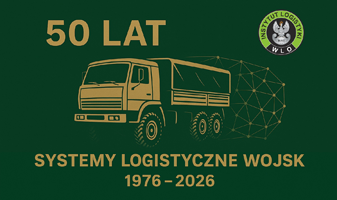ARTYKUŁ ORYGINALNY
Electronic anti-theft protection for vehicles of people with special needs
1
Division of Signal Processing and Electronic Systems, Institute of Automatic Control and Robotics, Poznan University of Technology, Polska
2
Mechatronics Technician Profile, Józef Sieradzan Technical and Electronics School Complex in Kalisz, Polska
A - Koncepcja i projekt badania; B - Gromadzenie i/lub zestawianie danych; C - Analiza i interpretacja danych; D - Napisanie artykułu; E - Krytyczne zrecenzowanie artykułu; F - Zatwierdzenie ostatecznej wersji artykułu
Data nadesłania: 20-11-2023
Data akceptacji: 28-12-2023
Data publikacji: 31-12-2023
Autor do korespondencji
Piotr Góral
Division of Signal Processing and Electronic Systems, Institute of Automatic Control and Robotics, Poznan University of Technology, ul. Piotrowo 3A, 61-138, Poznań, Polska
Division of Signal Processing and Electronic Systems, Institute of Automatic Control and Robotics, Poznan University of Technology, ul. Piotrowo 3A, 61-138, Poznań, Polska
SLW 2023;59(2):287-298
SŁOWA KLUCZOWE
DZIEDZINY
STRESZCZENIE
The article presents an electronic anti-theft protection subsystem that was incorporated into the vehicle control system dedicated to people with special communication needs. The aim of the work was to design and test an electronic subsystem allowing for the acquisition and quick analysis of fingerprint images, checking whether they belong to the vehicle owner and generating a signal allowing the vehicle to be started. The following hypothesis was put forward: it is possible to use artificial intelligence for accurate, automatic classification of fingerprint images acquired in a system with a single-chip microcomputer in order to identify a person. The research niche includes the use of biometrics in electronic anti-theft security adapted to people with special needs. This solution reduces the risk of theft and unauthorized use of special vehicles tailored to the owners' individual needs. The use of a commercial algorithm offered by the sensor manufacturer or the use of artificial neural networks for the classification of fingerprints was considered. The results of research on the accuracy of fingerprint recognition obtained from the developed subsystem are presented. The experiments performed based on the NASNetLarge artificial neural network model confirmed the possibility of achieving recognition accuracy for the test set of 99.99%. Additionally, practical aspects of the applicability of the presented device in an electric vehicle control system supporting the movement of people with physical and/or intellectual disabilities were discussed. The presented solution, after minor modifications, can be used in access security systems for protected rooms, as well as vehicles and military equipment.
Przetwarzamy dane osobowe zbierane podczas odwiedzania serwisu. Realizacja funkcji pozyskiwania informacji o użytkownikach i ich zachowaniu odbywa się poprzez dobrowolnie wprowadzone w formularzach informacje oraz zapisywanie w urządzeniach końcowych plików cookies (tzw. ciasteczka). Dane, w tym pliki cookies, wykorzystywane są w celu realizacji usług, zapewnienia wygodnego korzystania ze strony oraz w celu monitorowania ruchu zgodnie z Polityką prywatności. Dane są także zbierane i przetwarzane przez narzędzie Google Analytics (więcej).
Możesz zmienić ustawienia cookies w swojej przeglądarce. Ograniczenie stosowania plików cookies w konfiguracji przeglądarki może wpłynąć na niektóre funkcjonalności dostępne na stronie.
Możesz zmienić ustawienia cookies w swojej przeglądarce. Ograniczenie stosowania plików cookies w konfiguracji przeglądarki może wpłynąć na niektóre funkcjonalności dostępne na stronie.


